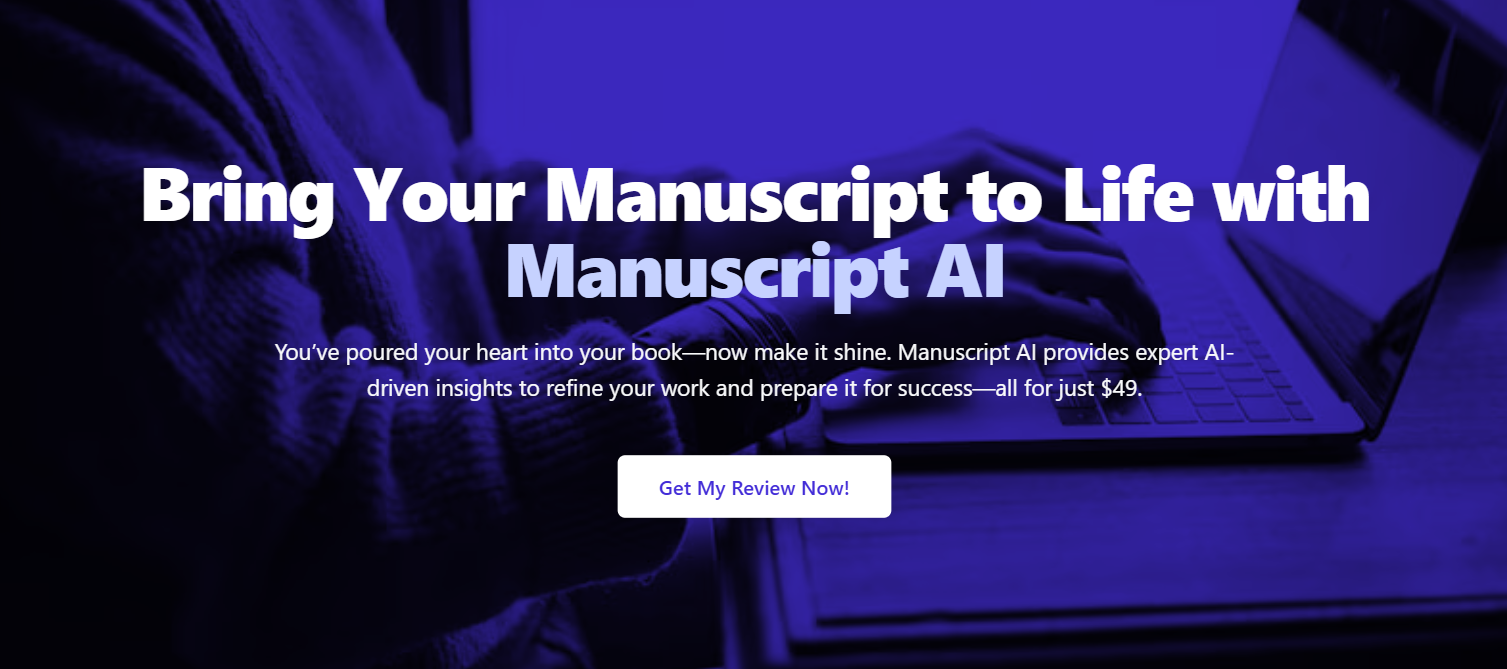Curious if AI book editing tool reviews are accurate? I tested Manuscript AI on my 70,000-word non-fiction manuscript to see if this book editing software could handle clarity, structure, pacing, and redundancy in complex topics. Here’s my candid AI book editing tool review and whether it truly rivals human editors.

Table of Contents
As an author, the editing process is often seen as a necessary evil. It's where the magic of writing meets the meticulous grind of refinement. For non-fiction, this process is even more critical. Clarity, accuracy, logical flow and persuasive argumentation aren't just desirable; they're essential for establishing credibility and effectively conveying your message.
For years, human editors were the undisputed gatekeepers of quality. Developmental editors for structure, line editors for prose, copy editors for grammar, and proofreaders for the final polish. Each stage is vital, time-consuming, and often, quite expensive. Then came the rise of AI. Suddenly, the promise of an AI book editing tool that could review your entire manuscript in minutes, offering feedback that typically costs thousands of dollars and weeks of waiting, seemed almost too good to be true.
Like many authors, I was skeptical. Can a machine truly understand the nuances of a complex non-fiction argument? Can it detect redundancy in thought, not just in words? Can it advise on pacing or narrative flow for a book rooted in facts and data? To answer these questions, I decided to put a leading AI book editing tool to the test. I tried Manuscript AI with a complete, 70,000-word non-fiction manuscript on a fairly intricate subject – the psychology of decision-making in financial markets. This isn't a fluffy self-help guide; it's dense, research-heavy, and relies heavily on logical progression. This is my candid AI book editing tool review.

Before diving into the results, let me set the stage for my test subject. My manuscript, "The Behavioral Investor's Edge" (a working title), explores cognitive biases, heuristics, and emotional factors that influence investment decisions. It combines academic research, real-world examples, and practical advice.
Key characteristics of the manuscript that would challenge any editor, human or AI:
My goal was to see if Manuscript AI could genuinely provide a structured manuscript review that addressed more than just surface-level errors. I was looking for insights into my book's overall architecture, the strength of its arguments, and its flow.
I uploaded the entire manuscript to Manuscript AI. The process was straightforward, and within minutes (yes, minutes, not weeks), I received a comprehensive report. This alone was a stark contrast to the typical waiting game with human editors.

The report was broken down into several sections, each offering different types of analysis. Here’s a breakdown of what I found, focusing on how it addressed the critical needs of a non-fiction manuscript:
This was the area I was most curious about, as structural editing is often the most expensive and time-consuming human service.
Non-fiction lives and dies by its arguments. If they're weak or unclear, the book loses its purpose.
Another common challenge in non-fiction is ensuring you don't repeat yourself excessively, especially when reinforcing key concepts.
This falls more into the realm of traditional line and copy editing.
It's important to be realistic about the limitations of any AI book editing tool.

Not every author will benefit equally from using an AI book editing tool, and that’s an important distinction to make. These tools are not a magic wand for every type of manuscript—they shine in specific contexts and fall short in others. If you’re writing a dense, research-heavy non-fiction manuscript, AI-driven book editing software can be a game-changer. It excels at catching structural flaws, identifying redundant arguments, and highlighting clarity issues that might weaken the flow of your work. For books that rely on logical progression, clear evidence, and coherent chapter structure, an AI-powered structured manuscript review provides insights that can save you weeks of back-and-forth with human editors.
First-time authors, in particular, will find these tools invaluable. Before spending thousands on professional editing, you can use AI to stress-test your manuscript, spot weak sections, and make your draft far more submission-ready. It’s like running your book through a high-level beta reader who never tires, never skips sections, and has the patience to scan every word with equal attention.
That said, if your manuscript leans heavily on emotional nuance—memoirs, poetry collections, deeply personal narratives—AI editing will only take you part of the way. A machine can analyze logic and flow, but it cannot fully understand the emotional resonance or subtle rhythm of your storytelling. In those genres, human editors remain irreplaceable for preserving voice, tone, and creative expression.
The best way to view AI right now is as a diagnostic tool. It helps you tighten your logic, improve clarity, and streamline structure. In other words, AI does the heavy lifting on the mechanics of your book, freeing you up to focus on creativity, storytelling, and the unique voice that no software can replicate. For non-fiction authors especially, it’s an incredibly efficient step toward creating a polished, professional, and truly submission-ready manuscript.
Based on my experience, an AI book editing tool like Manuscript AI is not a complete replacement for all human editing, especially for the final, nuanced polish of a professional line editor or proofreader. However, it is an incredibly powerful, objective, and efficient beta reader alternative and an essential objective editing tool for non-fiction authors.
Here’s why I believe every non-fiction author should consider using it:
For non-fiction authors, especially those tackling complex topics, tried Manuscript AI (or a similar specialized tool) should be a non-negotiable step in their editing process. It helps you catch the major, often unseen, structural flaws that can derail your book, giving you a massive head start on fast book editing and ensuring your manuscript is closer to submission-ready editing than ever before. It's not about replacing human creativity or expertise, but about augmenting your process with intelligent, rapid analysis that frees you to focus your human efforts on the nuanced artistry of your writing.
My honest conclusion from this AI book editing tool review: Yes, AI can absolutely edit a book, especially non-fiction, at a fundamental and highly impactful level. It's a game-changer that every serious non-fiction author needs to explore.

The publishing industry is dynamic, but the core need for quality, clarity, and market viability remains constant. For non-fiction authors, the journey from manuscript to published book is demanding, requiring meticulous attention to detail and a strategic approach to submission-ready editing.
AI-powered tools are not just a luxury; they are becoming an essential component of the modern author's toolkit. From providing comprehensive AI book structure review with tools like Manuscript AI, to refining your prose for grammar issues in nonfiction, eliminating passive voice, and correcting clarity mistakes with other advanced editors, AI offers unparalleled efficiency and objectivity. It allows authors to conduct deep-level nonfiction manuscript editing at a fraction of the traditional cost and time, ensuring their work meets the exacting publisher manuscript checklist requirements.
By strategically integrating AI into your preparing manuscript for publisher process, you empower yourself to present a polished, professional, and compelling non-fiction book that truly stands out. Don't let common pitfalls hinder your publishing dreams. Embrace the future of editing and confidently send your manuscript out into the world, knowing you've given it every chance to succeed.

Co-founder of Manuscript AI | Writing Afficianado